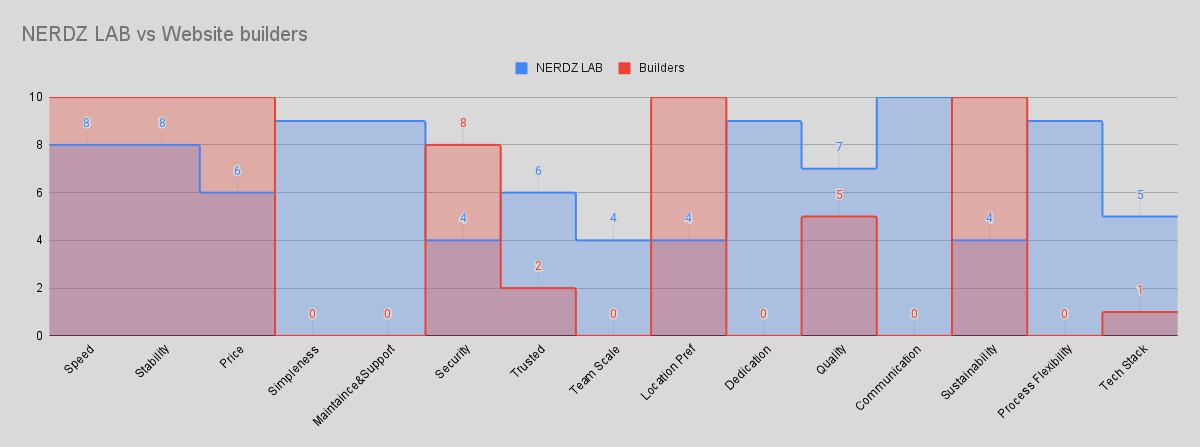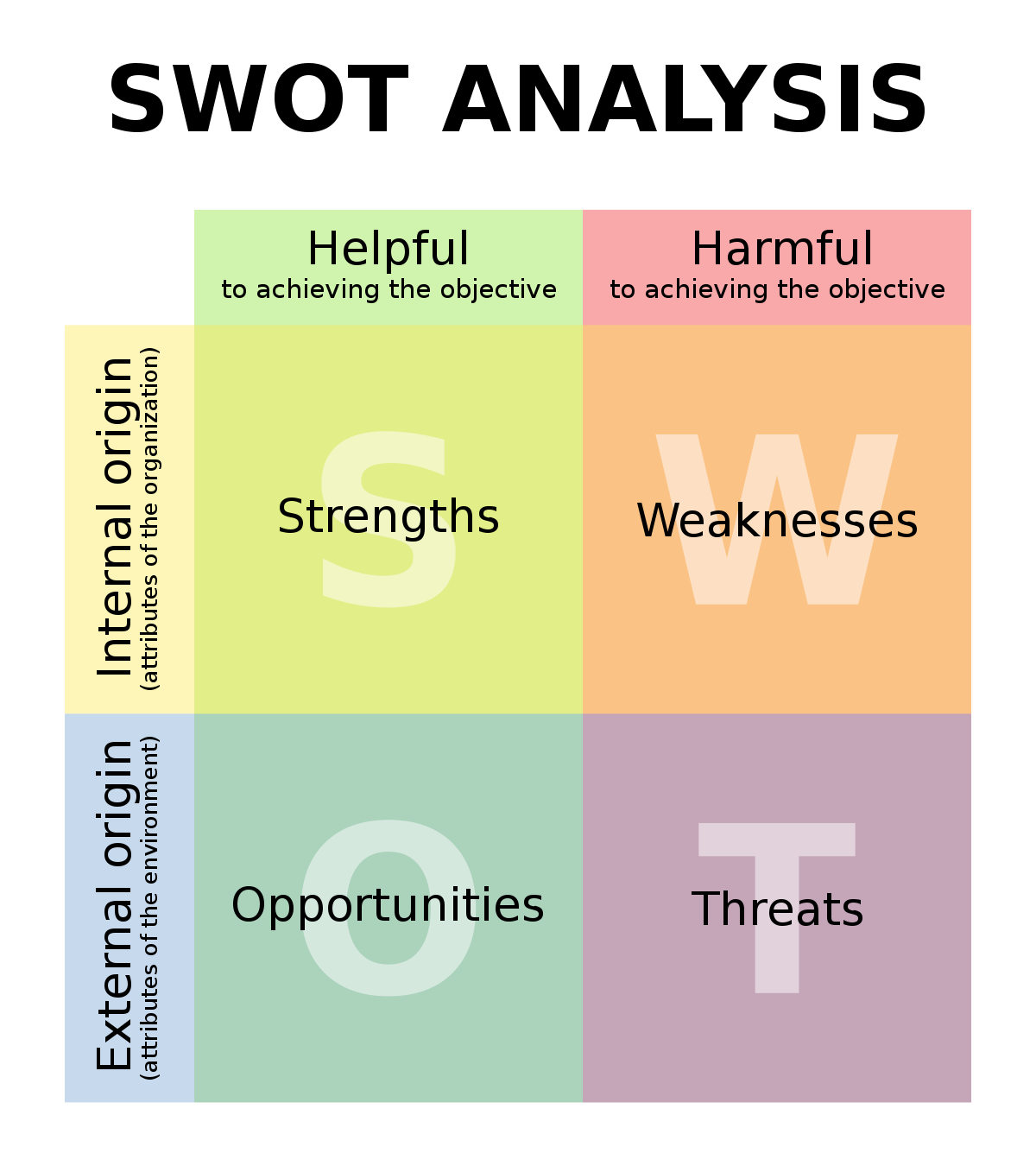От халепа... Ця сторінка ще не має українського перекладу, але ми вже над цим працюємо!

How to develop a strategy for startups and not only

Volodymyr Khmil
/
CEO
9 min read
About the author: Volodymyr Khmil is the co-founder and CEO of NERDZ LAB. Under his direction since 2017, NERDZ LAB has grown to a world-recognized company with more than 90 completed projects in development and IT consulting, as well as several successful startups. Clutch and GoodFirms recognized NERDZ LAB as an industry expert and top development company.
Most likely, you know what a business strategy is and why you need it. Wait, don’t roll your eyes! We aren’t going to bore you with scientific terms. When someone asks you to define a strategy, the first definition that springs to mind is probably “an action plan you need to accomplish a particular goal.” And it’s quite enough for what we’ll talk about here.
In this article, I’ll share the methods and techniques I used to develop a strategy for NERDZ LAB, a software development company as a startup founder. You won’t find empty talk or fancy words here—only hands-on recommendations that worked for me.
Article content

Pull out your notebook and start writing
Yes, I mean it literally. Write your problem down on paper and sketch out the steps to solve it. It is the easiest yet the most underrated method to identify the direction in which to move.
Too often, you don’t write a plan—you think it through in your head. But your imagination is limited, and it won’t always cover all the pitfalls and challenges you might face in the future. When you put the idea down on paper, you can discover the overlooked aspects of the problem.
Writing helps you clarify and structure your thoughts. It might be hard to build a six-step plan all in your head, but a notepad offers enough space to write out a multi-page strategy.

Learn a Zoom out, Zoom in technique
Zoom out, Zoom in is a simple and convenient technique to analyze data faster and more effectively.
Whenever you have a problem you need to solve, look at the bigger picture first. Take a few steps back (zoom out) to examine the business areas and bring out all the factors affecting them. Once you pinpoint your problem, zoom in on details.
For example, if your company exceeded the budget, don’t look at your company’s income and spending trying to find what exactly went wrong. Zoom out instead. Check the profit and loss statement for the last six months. Are your expenses higher than planned? If yes, zoom in and find out what department overran the budget and in which month.
Zoom in even more until you understand precisely where it all started from.
The Zoom out, Zoom in technique might seem obvious at first glance, but I rarely see people using it to make decisions. Instead, they try to analyze everything at once, looking for a needle in a haystack. Don’t be like them: divide your haystack into smaller piles.

Analyze where you stand: Four instruments for business analysis
The biggest hurdle to developing a business strategy is the volume of information you need to analyze. Not all of it is accurate or to the point. And this is where strategic instruments come in handy.
Strategic instruments allow you to structure the information and analyze your idea. They are not magic wands, though. You can’t develop a proper strategy only by looking at data, but you’ll better understand what to do.
We’ll cover all your startup needs along your way to the land of unicorns. Check out our services for startups.
1. Portfolio analysis
Portfolio analysis shows the correlation between the products or services a company offers and those that customers want. Let’s have a look at a simple example.
At NERDZ LAB, along with IT advisory, we offer two main services—outsourcing and outstaffing. Either of them would work for two customer categories: startup founders and existing businesses. If needed, we can segment each category into subcategories to focus on a specific customer group.
Once you identify the groups, ask yourself these three questions:
- What do we sell to a customer (your perspective)?
- What does a customer want to buy (a customer’s perspective)?
- Does our perspective match the customer’s perspective (the correlation)?
An honest answer will help you better understand your product or service portfolio. It will also generate new insights or help discover cross-selling synergies.
At NERDZ LAB, we have expertise in software development services for startups and launch our own startups, too. As a result, the better our expertise, the better outcomes we can generate both for our customers and our startup business. Our startup promotion helps us with promoting our services to startup founders.
2. SWOT
The SWOT (Strengths, Weaknesses, Opportunities, Threats) analysis is probably the most common instrument you can use to assess your position before starting a new business or adopting a new idea.
The SWOT matrix (see the picture below) is a 2×2 grid of four fields representing helpful and harmful factors. Strengths and weaknesses are internal factors that you can change, while opportunities and threats are external factors that you can’t influence directly.
SWOT is usually used for a superficial analysis when you need to zoom out to see a bigger picture of your current situation. The results of SWOT will help you take stock of your business advantages, weak points, and risks.
3. Porter’s five forces analysis (diamond model)
Porter’s five forces analysis helps understand the level of competition in your market or across the industry. Before starting a new business or entering a new market, you can use it to assess customers’ interest and your potential success rate.
According to Porter, competitors are not the only factor that affects market rivalry. It depends on these five forces which you need to analyze:
- Threat of new entrants. It depends on many factors, such as industry barriers to entry, capital requirements, brand loyalty, and access to distribution channels. For example, the threat of new entrants in the food industry will be higher than in the airline industry with its many entry barriers.
- Bargaining power of suppliers is the risk of a sudden price increase, quality loss, or a shortage of supplied products. It depends on how many suppliers are available and how unique their products are. The diamond industry that one supplier was controlling for years is one of the markets with high supplier power.
- Bargaining power of buyers shows how strongly buyers can affect your success. Buyer power depends on the number of customers, size of their orders, price sensitivity, switching costs, and customers’ ability to substitute products. For example, in the textile industry, with many similar products on the market and low switching costs, the buyer power is high.
- Threat of substitute products shows how easily your customers can switch to alternatives within your product group or industry. For example, customers can switch from Sprite to Starbucks whenever they want, even though these drinks belong to different product groups (soft drinks and coffee). Here`s another example. Netflix can be considered a substitute for online games, as a person might spend time either playing a game or watching Netflix. That way, you have to consider this as well. You compete not only with other online games but also with people’s desire to do other activities.
- Rivalry among existing competitors represents the current competition in the market. It depends on the number of competitors and their diversity, industry growth, brand loyalty, and barriers to exit. A slow-growing industry with many competitors equal in power will have the greatest rivalry. Take the airline industry before the pandemic as an example—stagnation, high exit barriers, and many players of a similar size resulted in fierce competition.
Porter’s five forces will benefit you the most at the early stages of analysis. For the best results, combine it with other instruments.
Get more insights: 10+1 steps to building UI/UX design for startups
4. Blue ocean strategy
Chan Kim and Renée Mauborgne described the blue ocean strategy in their seminal book in 2004. If you haven’t heard about it yet, here is a gist of their ocean metaphor:
- Blue oceans are new, unexplored markets with no competition, where demand occurs naturally and companies don’t fight over it. These markets don’t play by the rules as they are yet to be set.
- Red oceans are existing markets with defined boundaries and set competition rules. Here, sharks of the business world fight over demand, trying to outperform their competitors. It creates fierce, ‘bloody’ competition.
Like Porter’s five force analysis, the blue ocean strategy helps determine what level of competition is in the market and who your competitors are.
Let’s have a closer look at how you can use this instrument:
- Draw up a table:Rows: list the products or competencies that exist on your market and are demanded by consumers (portfolio analysis).Columns: write down your competitors and substitute products if relevant (Porter’s analysis).
- Evaluate (hand on heart!) the level of your and your competitors’ competency from 1 to 10. You can do it intuitively or use the results of additional research.
- Voila! Now you have a visual chart of your weaknesses and the main competitors you’re fighting with.

The blue ocean strategy can also help you discover new niches within your market. Instead of playing by traditional red-ocean rules, try to let go of limited thinking and shift attention toward customer pains and needs. By unlocking new demands and closing supply gaps with innovative products, you’ll take advantage of the market with high payoffs and no competitors.
All these instruments show us where we stand and help calculate our chances for success. Yet, they don’t show us how we can solve the problem or achieve the desired results. Let’s explore this in more detail.

Ask yourself the right questions
Business analysis can generate a lot of data and insights. How to bring all this information together and make the right decision? By asking yourself the right questions and giving honest answers.
Your business strategy should tell you where to go and how to get there. Here are three questions you can start with to pick a direction:
- What do I see?
- What does it mean?
- What will I do with this?
Once you answer them, dive deeper into your situation:
- What things will I leave untouched?
- What will I do more?
- What will I do less?
- What will I stop doing?
- What will I start doing?
These questions will also help if you want to go beyond your current market and create a strategy on how to stand out in the entire industry. Ask the same questions but think on an industry scale. For example: what will I do more to meet and exceed industry standards?
Unbiased and creative answers are key to a sound strategy and decisions. And this is where we move on to our next point.
From idea to ready-to-market product. We’ll get your back up at any stage. Let`s talk. Book a meeting now.

Don’t distort the reality
Even the best instruments and questions won’t save you from unconscious bias and mental errors that distort the truth and sway your decision-making. Let’s get off our high horse for a minute and acknowledge the fact: none of us is rational.
People tend to make mistakes by:
- Focusing on winners and not taking losers into accounts (survivorship bias)
- Trying to avoid losses more than trying to make gains (loss aversion)
- Relying on what confirms their thoughts rather than contradicts them (confirmation bias)
The list goes on. More often than not, our brain takes shortcuts and plays tricks. Instead of rushing into decisions, take your time to analyze your business performance and determine its vision and values.
Return to your drafts repeatedly to review your conclusions, ask more questions, or add new information.

The bottom line
Strategic instruments and recommendations described in the article might seem quite simple. Still, they can help you generate insights, find extra questions to ask yourself and discover new areas to focus on. This happened to me: these straightforward techniques have opened my eyes.
I truly hope these tips will help you develop an effective business strategy, whether you are a business owner or only launching a startup company. And should you need help along this road or any startup product development services, NERDZ LAB is here to give your project a jumpstart. Contact us for a project estimate or consultation.





